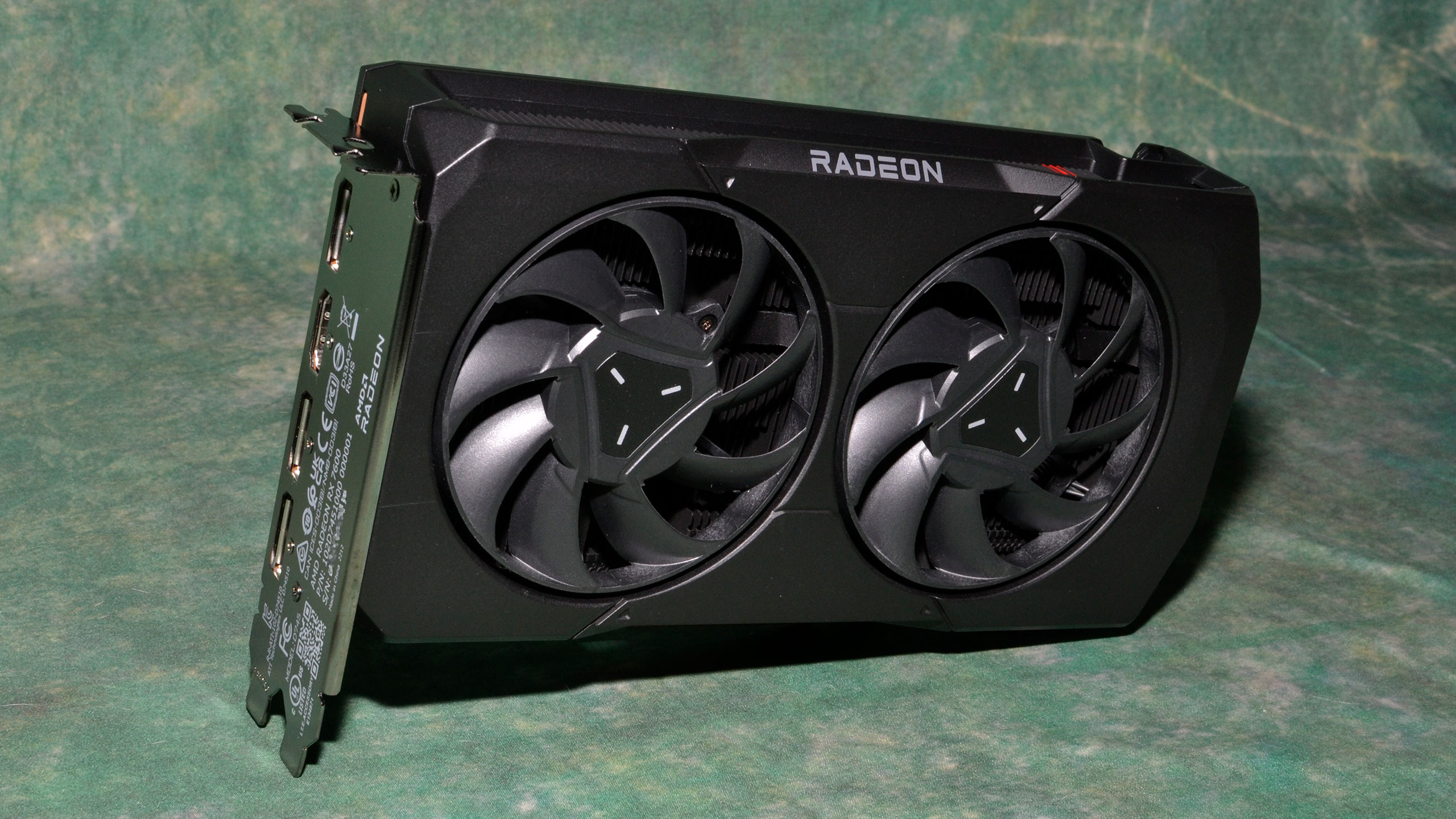Why you can trust Tom's Hardware
We were still collecting results for some of the GPUs on our AI / professional apps tests when the RTX 4060 Ti review went live, but we've managed to catch up (mostly). Back to back new GPU launches aren't fun, in case you were wondering.
Modern GPUs aren't just about gaming, and they can be used for video encoding, AI tasks like Stable Diffusion and Whisper, and other professional applications. We've tested the RX 7600 in these areas as well, to see how it stacks up.
Radeon RX 7600: AI Performance
For our AI benchmarks, we're running Automatic1111's Stable Diffusion version for the Nvidia cards, and Nod.ai's Shark variant for AMD GPUs. We used the automatic build version 20230521.737 for testing, launched with "--iree_vulkan_target_triple=rdna3-7900-windows" as recommended by AMD, or "rdna2-unknown-windows" for the RX 6000-series (that's the default). The Nvidia GPUs were tested after replacing the default CUDA DLL files with newer versions, as recommended by Nvidia.
There are other AI text to image tools available, and even looking at different variations of Stable Diffusion, results can vary quite a bit. But this is the best solution we've got right now, so let's see the results. We generated batches of 20 images and timed how long each GPU took, then converted the result to images per minute. We test at both 512x512 and 768x768 resolutions, where possible, though the latter isn't yet optimized to work well on AMD's GPUs.
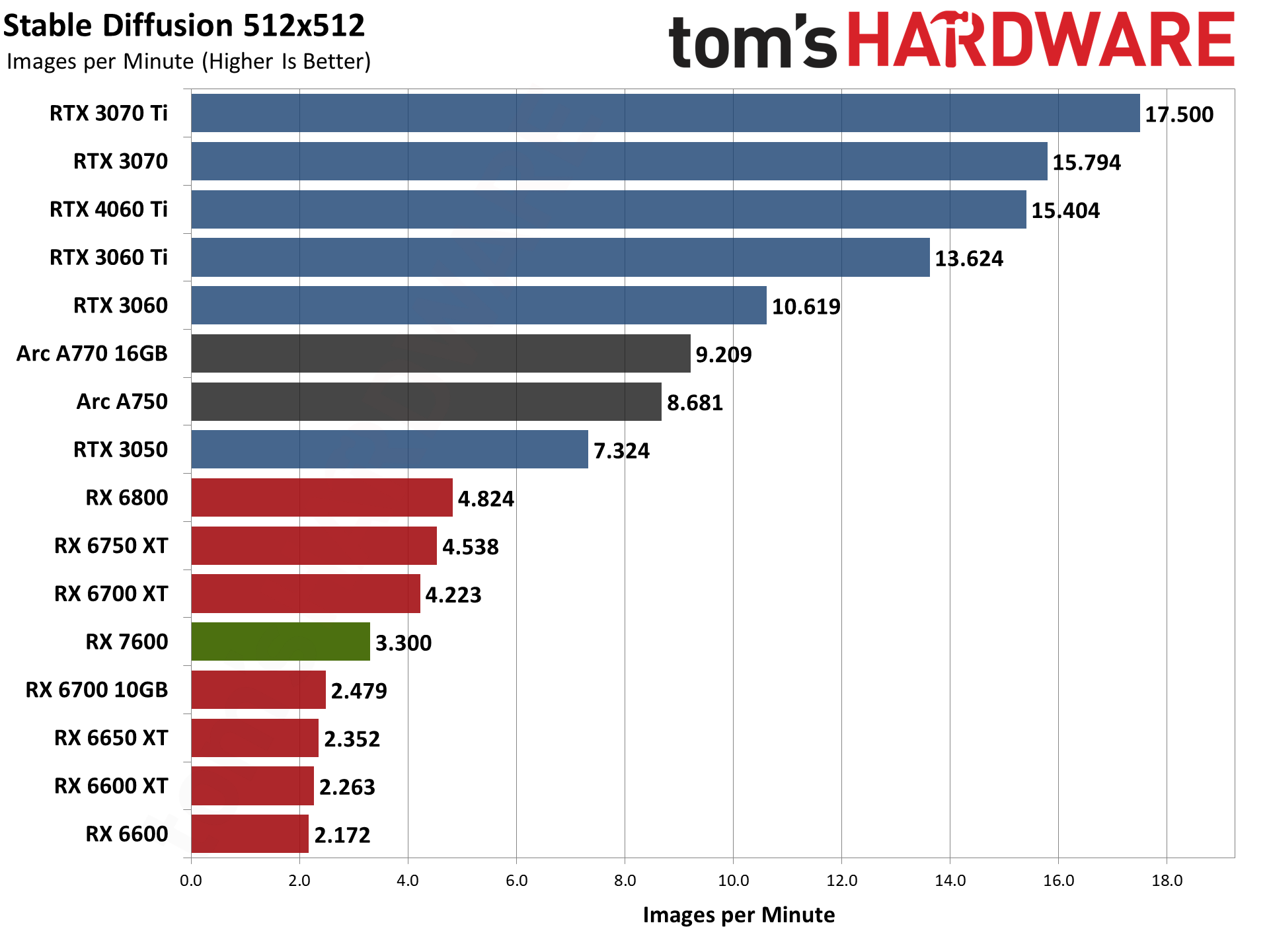
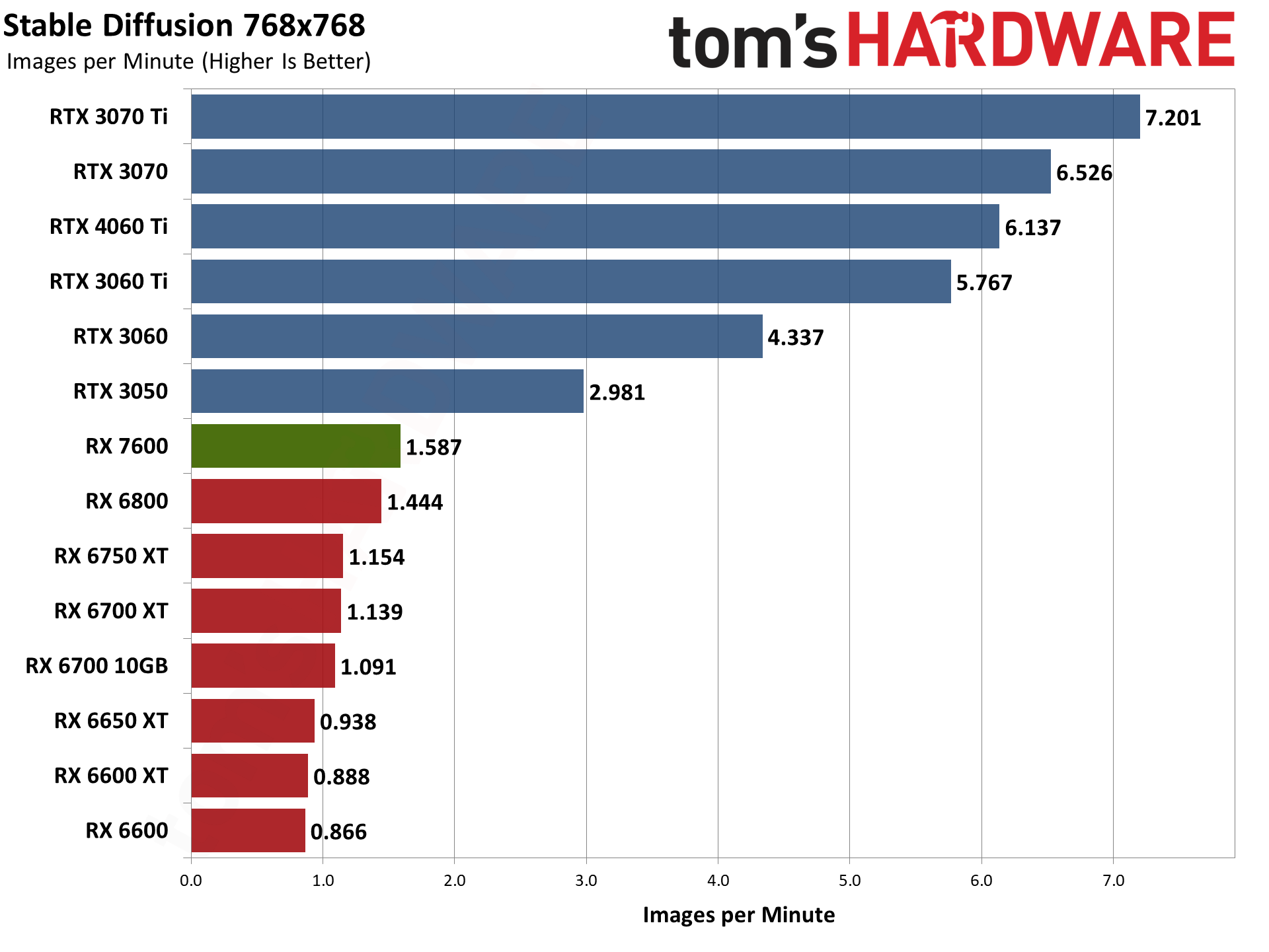
We have some good news and some bad news. The bad news is that AMD's GPUs get absolutely demolished in this particular test. The fastest AMD card in our charts, the RX 6800, is 34% slower than even the rather lackluster RTX 3050. The good news, if you're the silver lining type of person, is that RDNA 3 shows some clear performance improvements relative to RDNA 2.
Except we don't know if that's thanks to RDNA 3 targeted optimizations, or if it's because of the doubling of ALUs per GPU shader. We'd like to think it's the latter, but that may or may not be correct. Regardless, in our 512x512 Stable Diffusion tests, the RX 7600 is 40% faster than the RX 6650 XT. We never came anywhere near that big of a gap in the gaming tests.
Perhaps even more interesting is that the 768x768 results have the RX 7600 topping even the RX 6800. Again, that could be targeted optimizations, but theoretically the RX 7600 has 43.5 teraflops of FP16 compute performance available, while the RX 6800 only has 33.3 teraflops of FP16. So, as unlikely as it might seem based on the gaming results, these charts may not actually be a fluke.
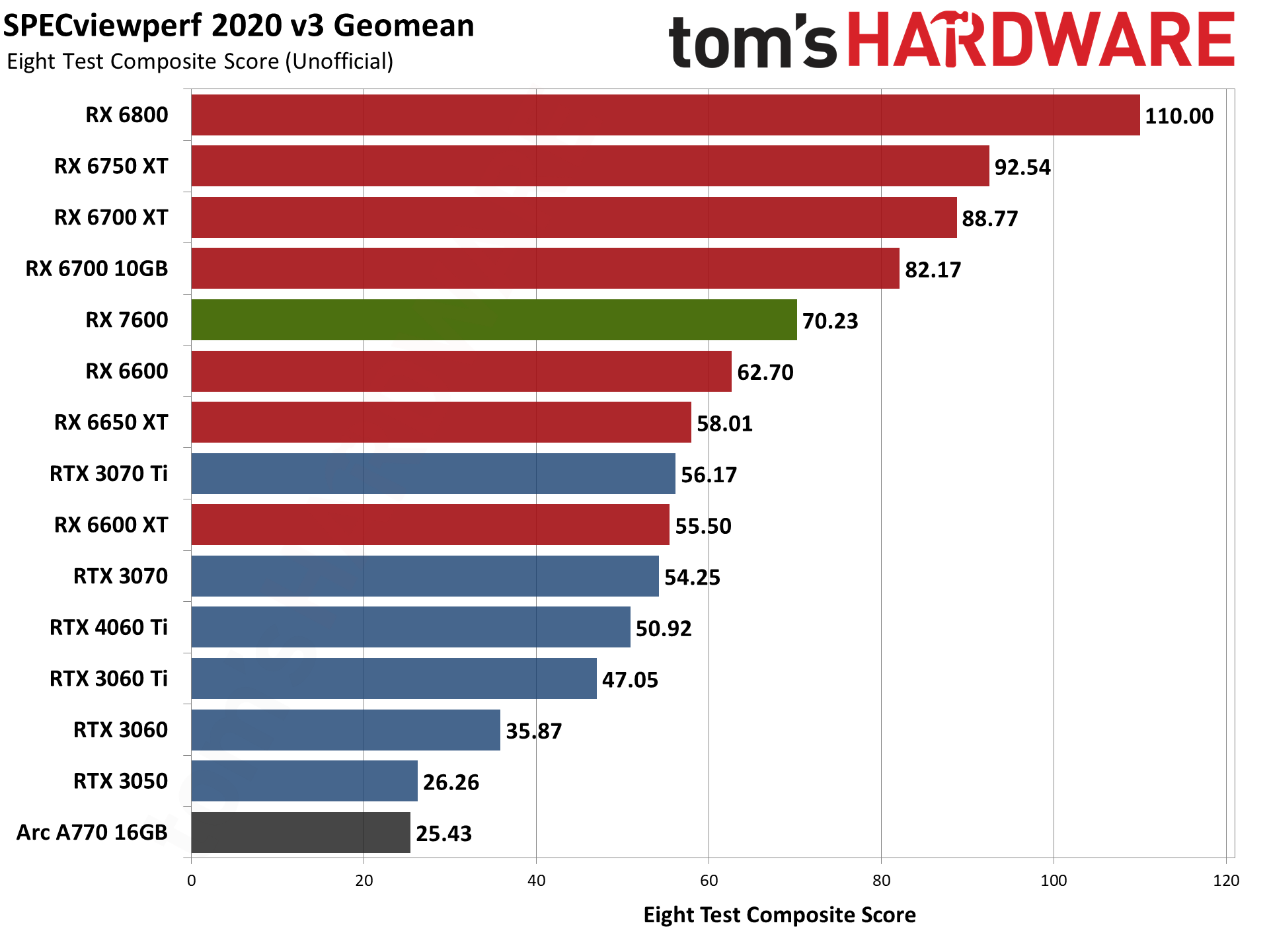
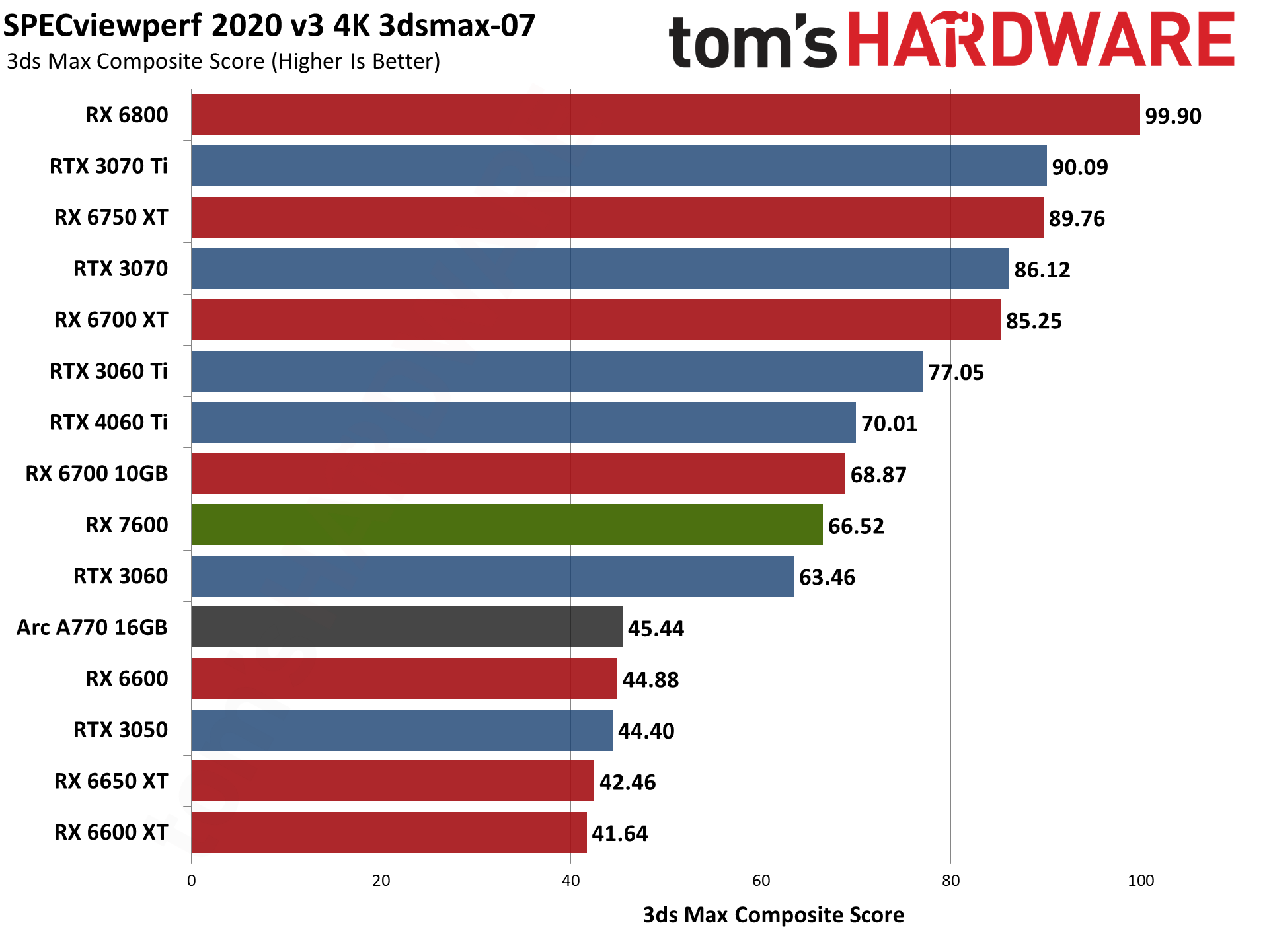
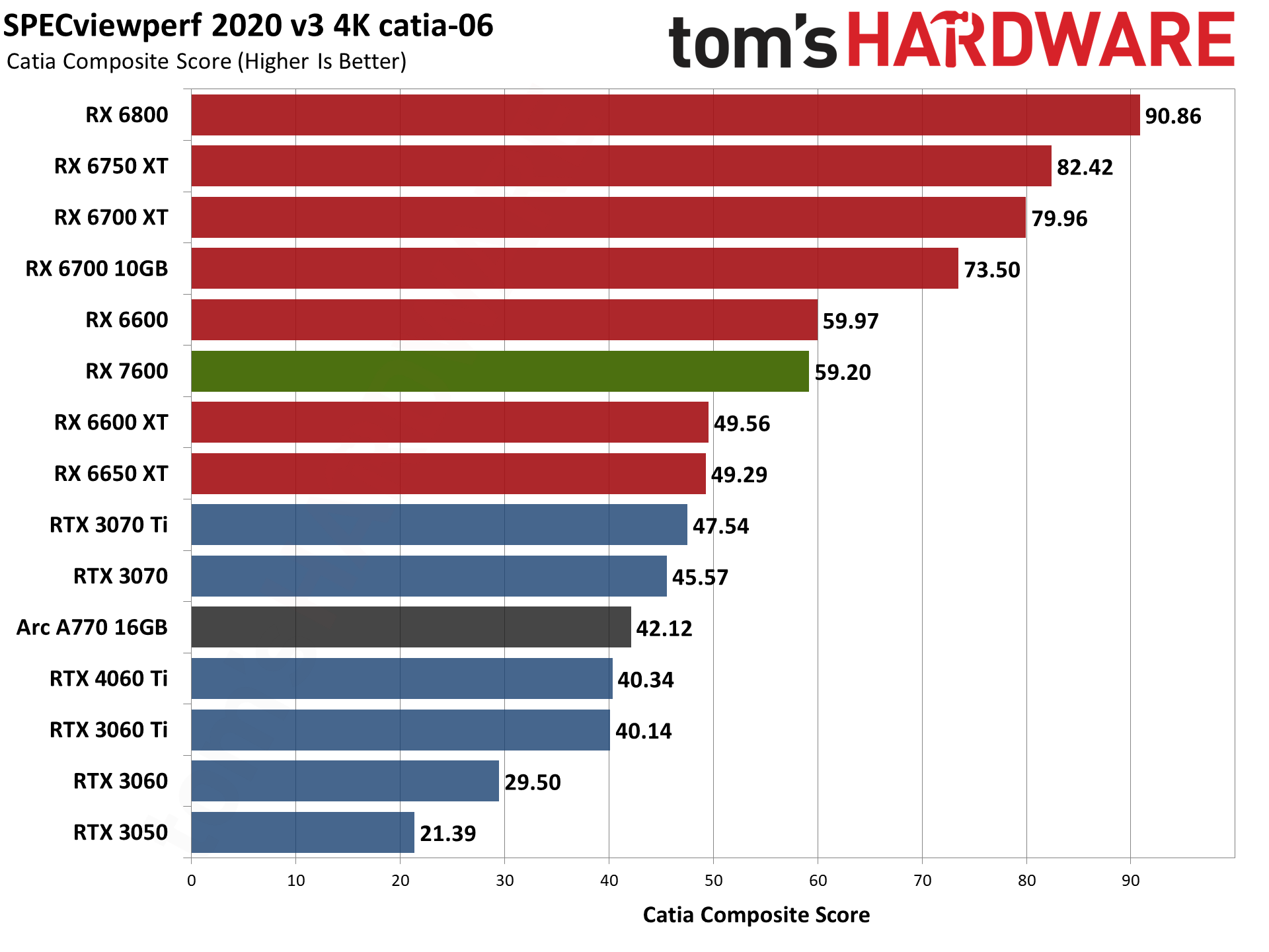
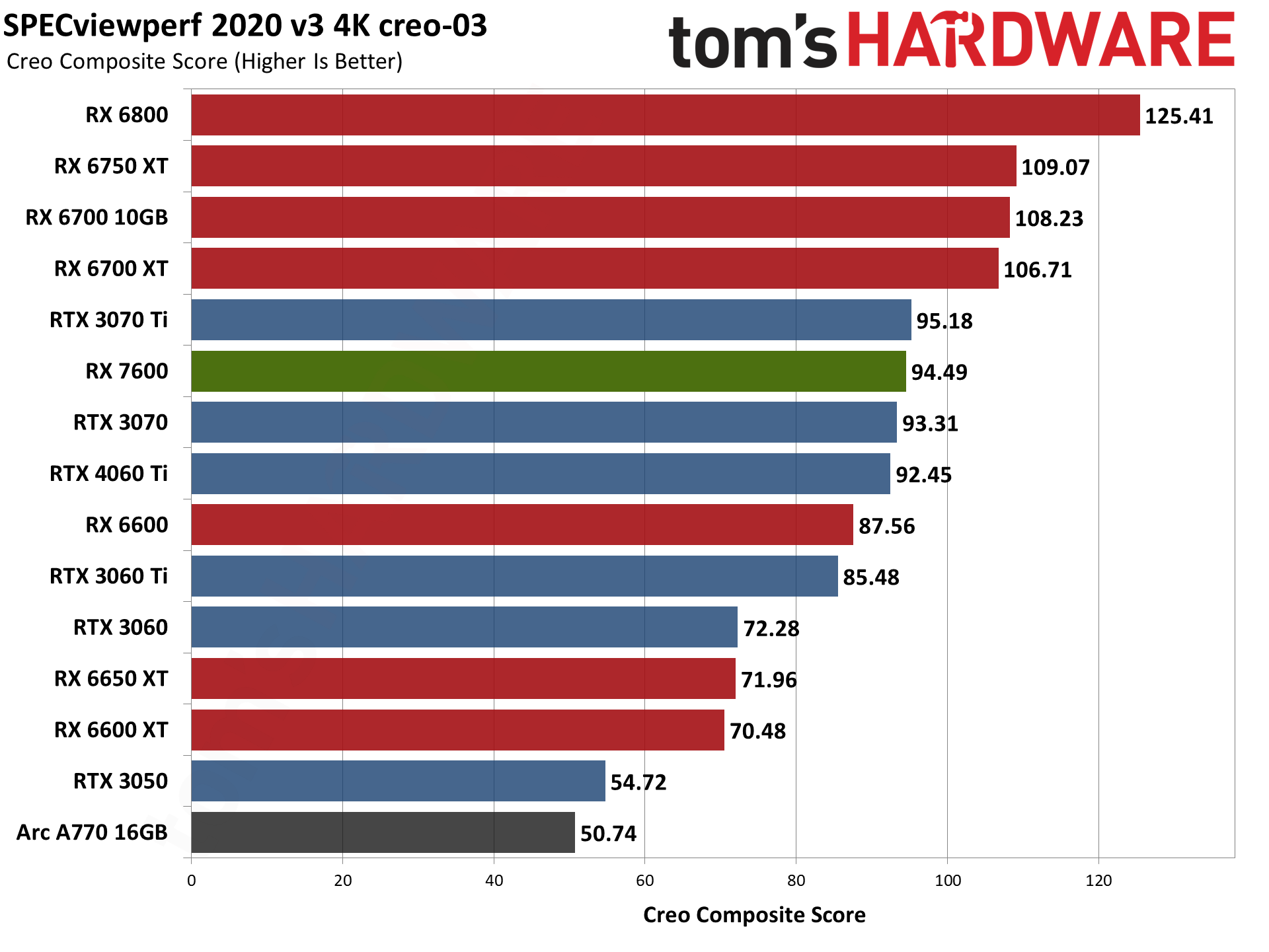
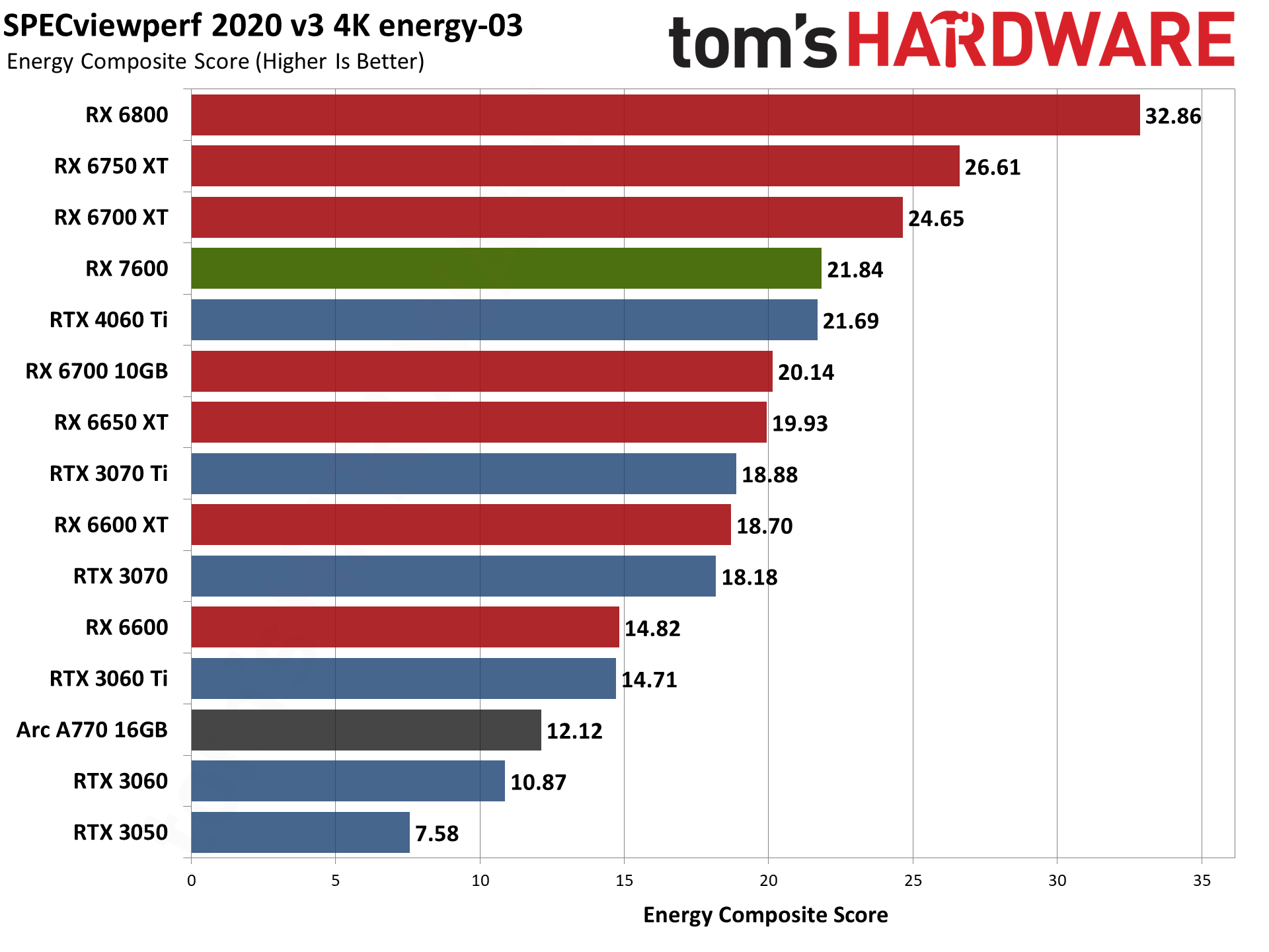
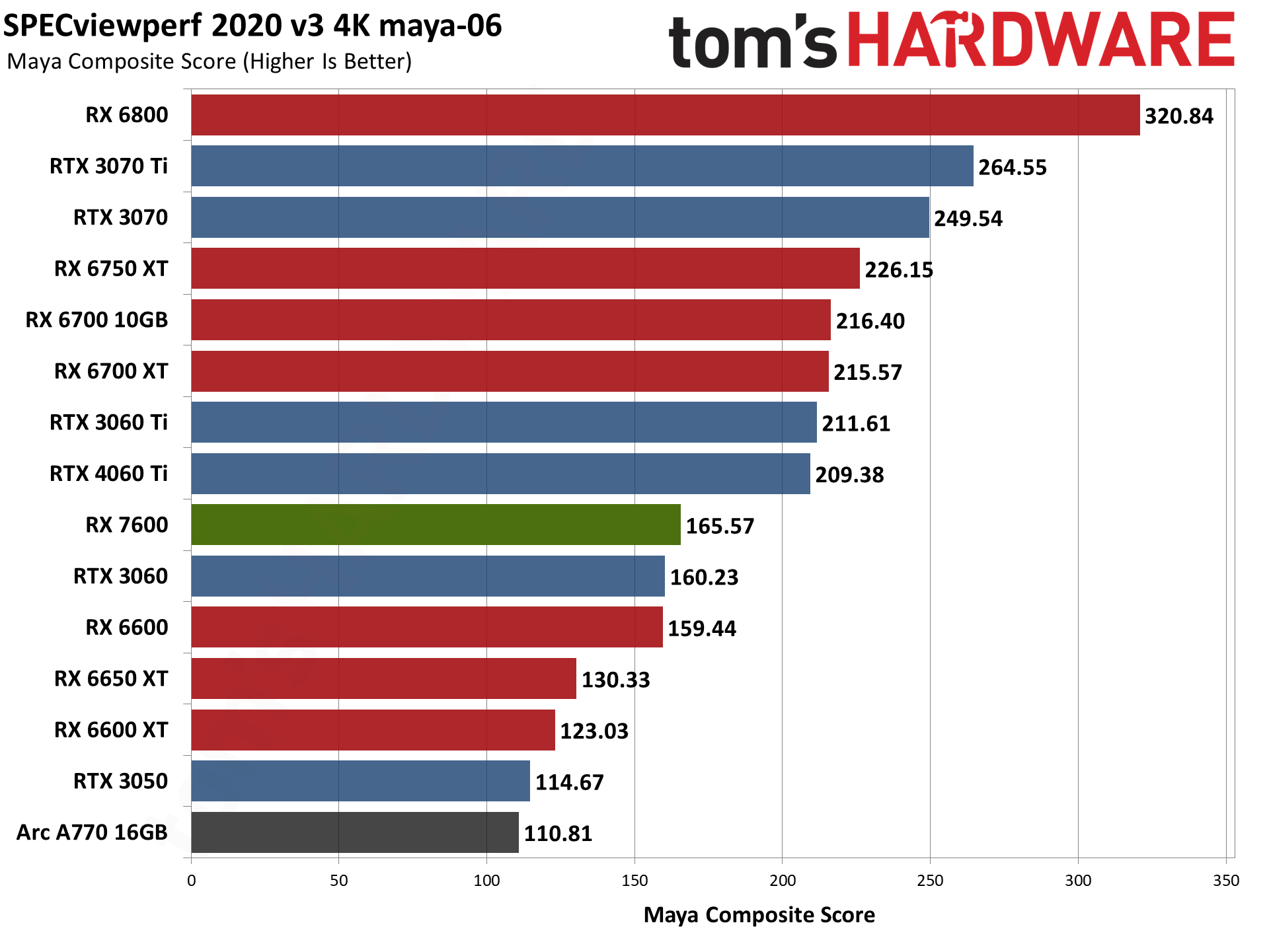
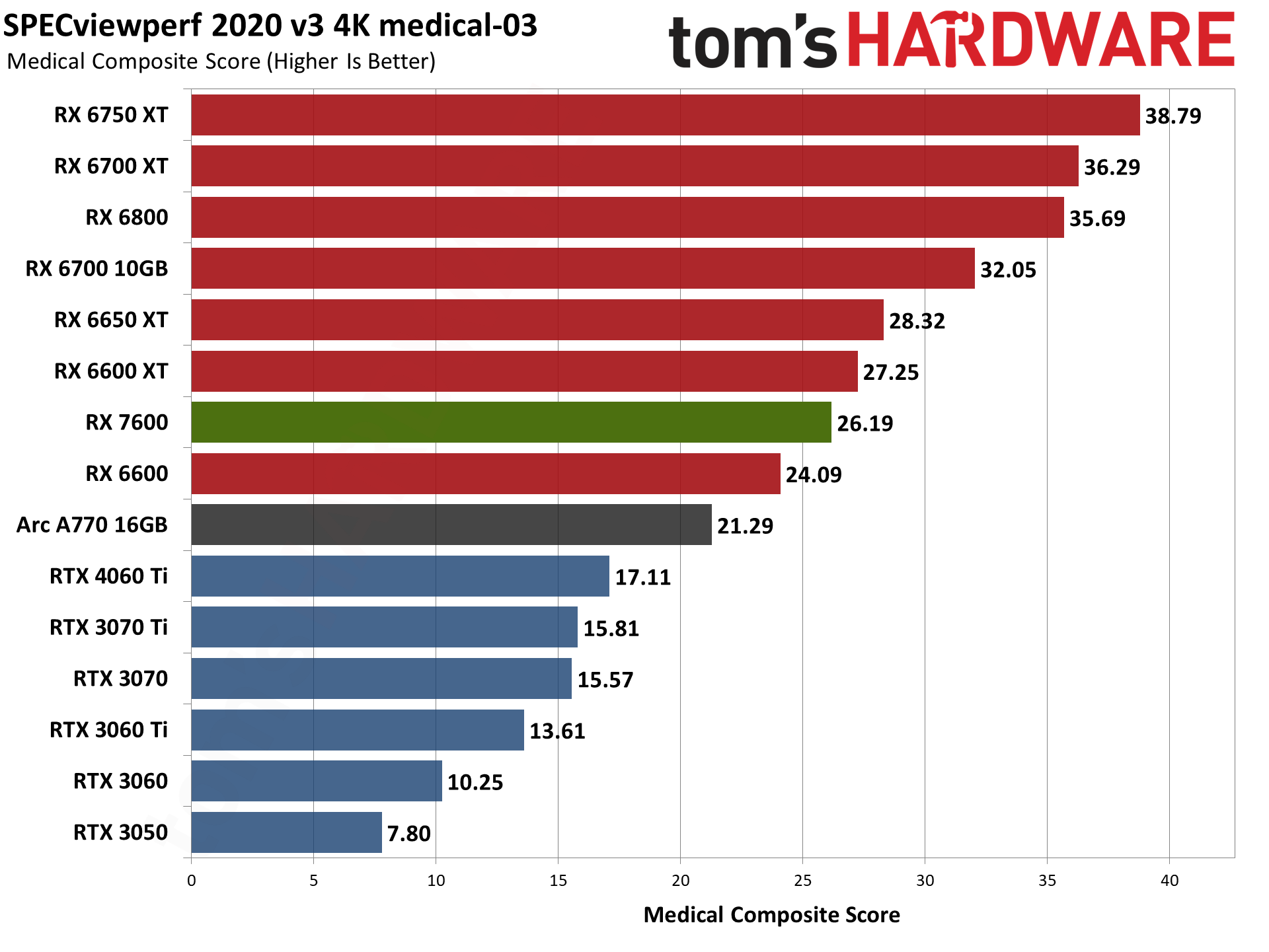

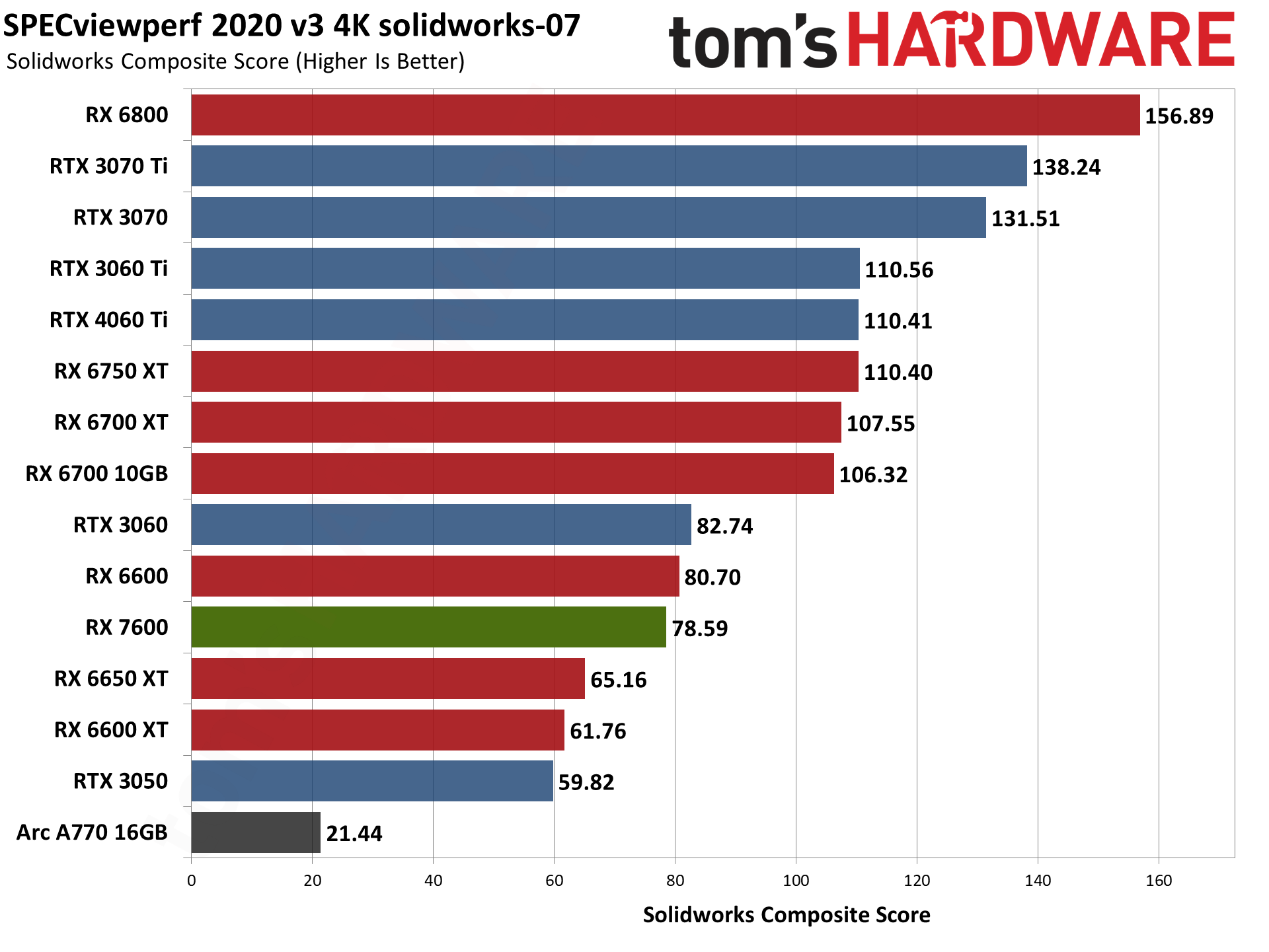
SPECviewperf 2020 consists of eight different benchmarks, and we use the geometric mean from those to generate an aggregate "overall" score. Note that this is not an official score, but it gives equal weight to the individual tests and provides a nice high-level overview of performance. Few professionals use all of these programs, however, so it's typically more important to look at the results for the application(s) you plan to use.
Across the eight tests, AMD's RX 7600 lands between the RX 6700 10GB... and the RX 6600. Wait, what? Yeah, we know, the RX 6600 seems to be overachieving here, or else the RX 6650 XT and RX 6600 XT are underachieving. All three of those GPUs were tested with the same 23.4.3 drivers in the past day or so, and the results were consistent at the time (we ran the whole test suite twice). We'll see about retesting after doing a driver clean in the next day or so.
For now, AMD's RX 7600 places about where it should relative to the other AMD GPUs, and in the overall score AMD beats all of the RTX 3070 Ti and lower GPUs. That's because AMD GPUs score particularly well in snx-04, the eighth slide in the above gallery. AMD GPUs also generally score higher in catia-06, creo-03, energy-03, and medical-03, while Nvidia GPUs do better in 3dsmax-07 — with maya-06 and solidworks-07 being more neutral.
If you use any of those applications on a regular basis, that could be enough to sway your GPU purchasing decision. But if you're using Catia or 3ds Max on a regular basis, you're probably not looking at purchasing a mainstream $269 GPU expressly for that purpose.
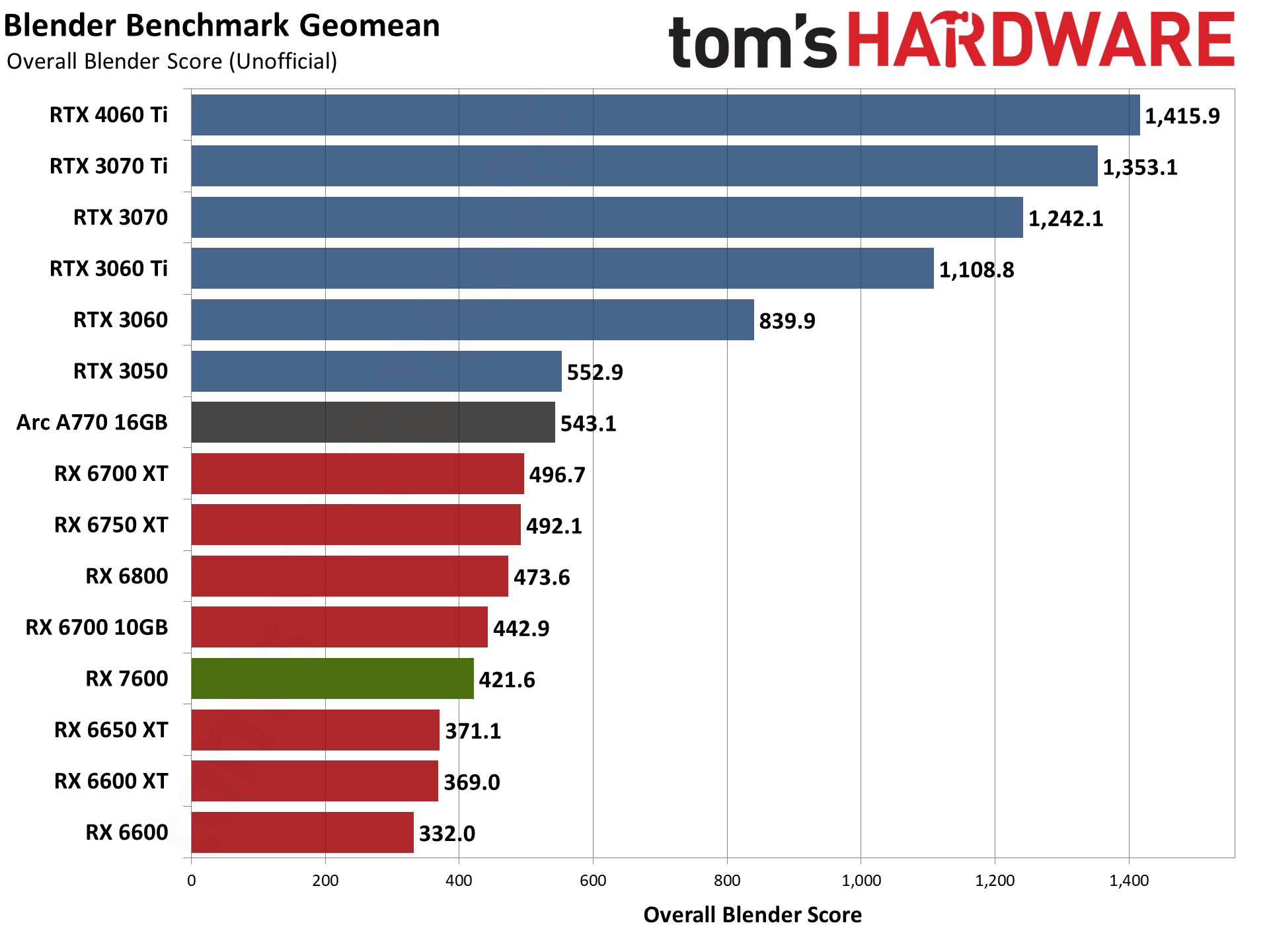
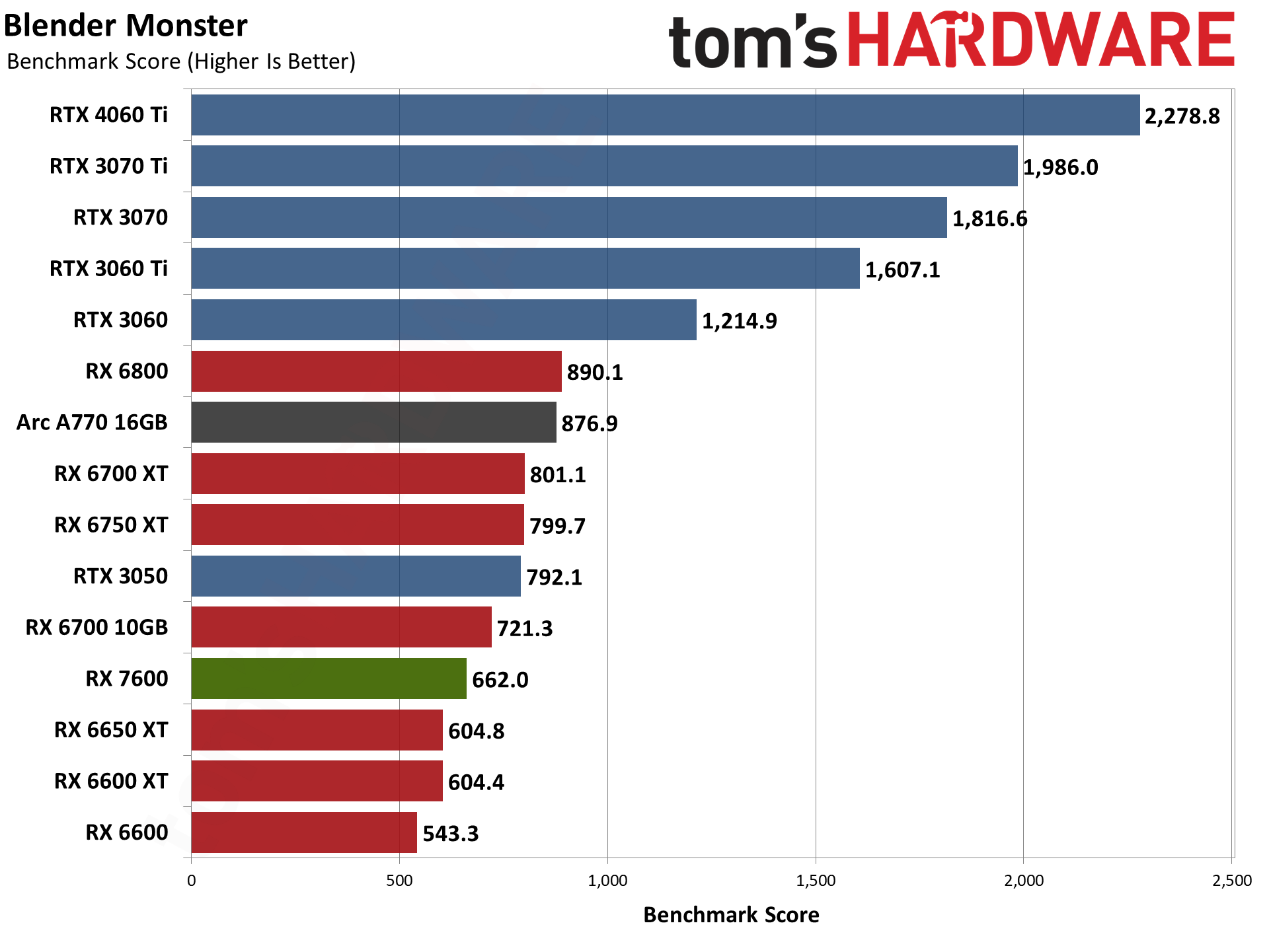
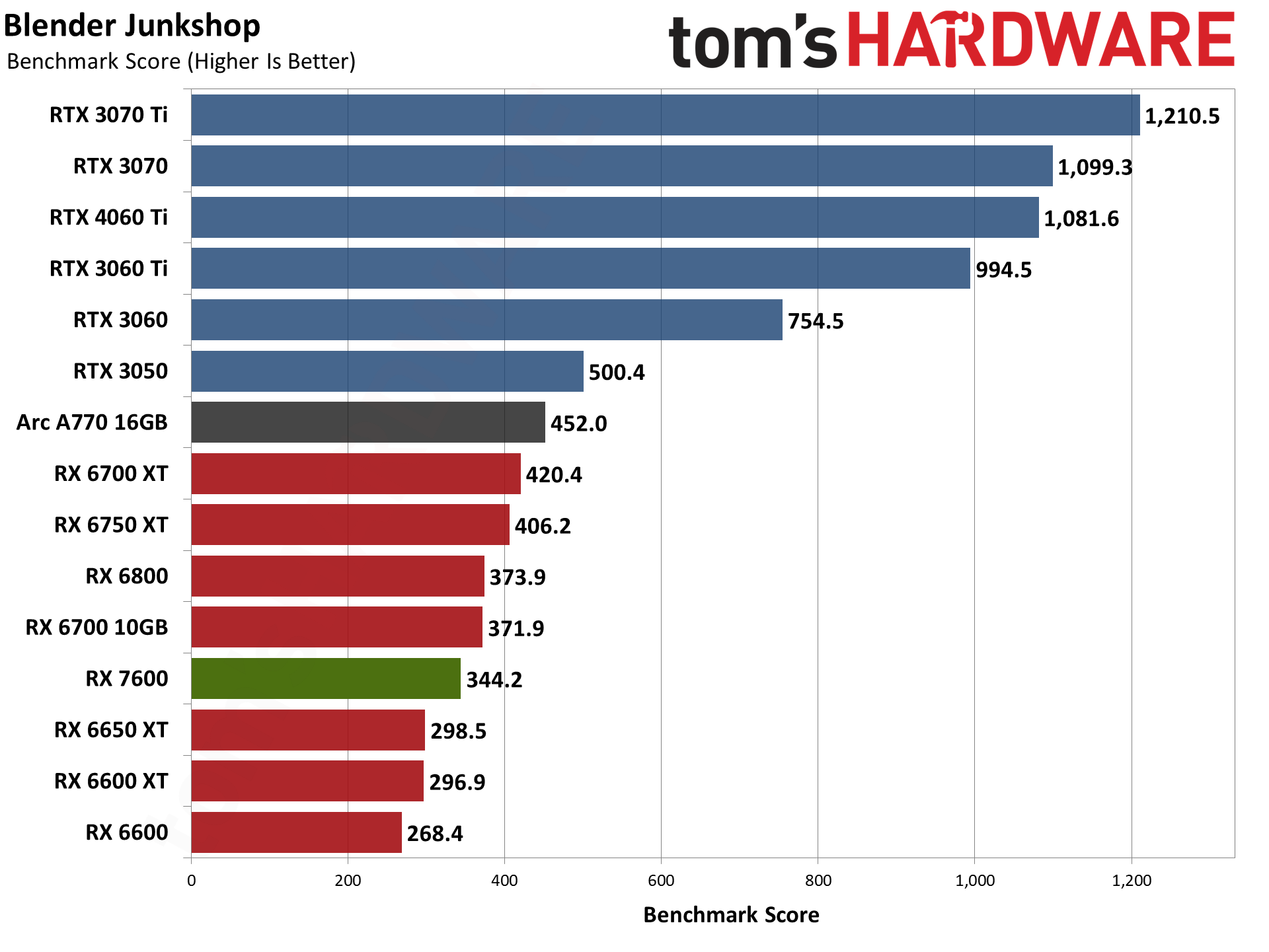
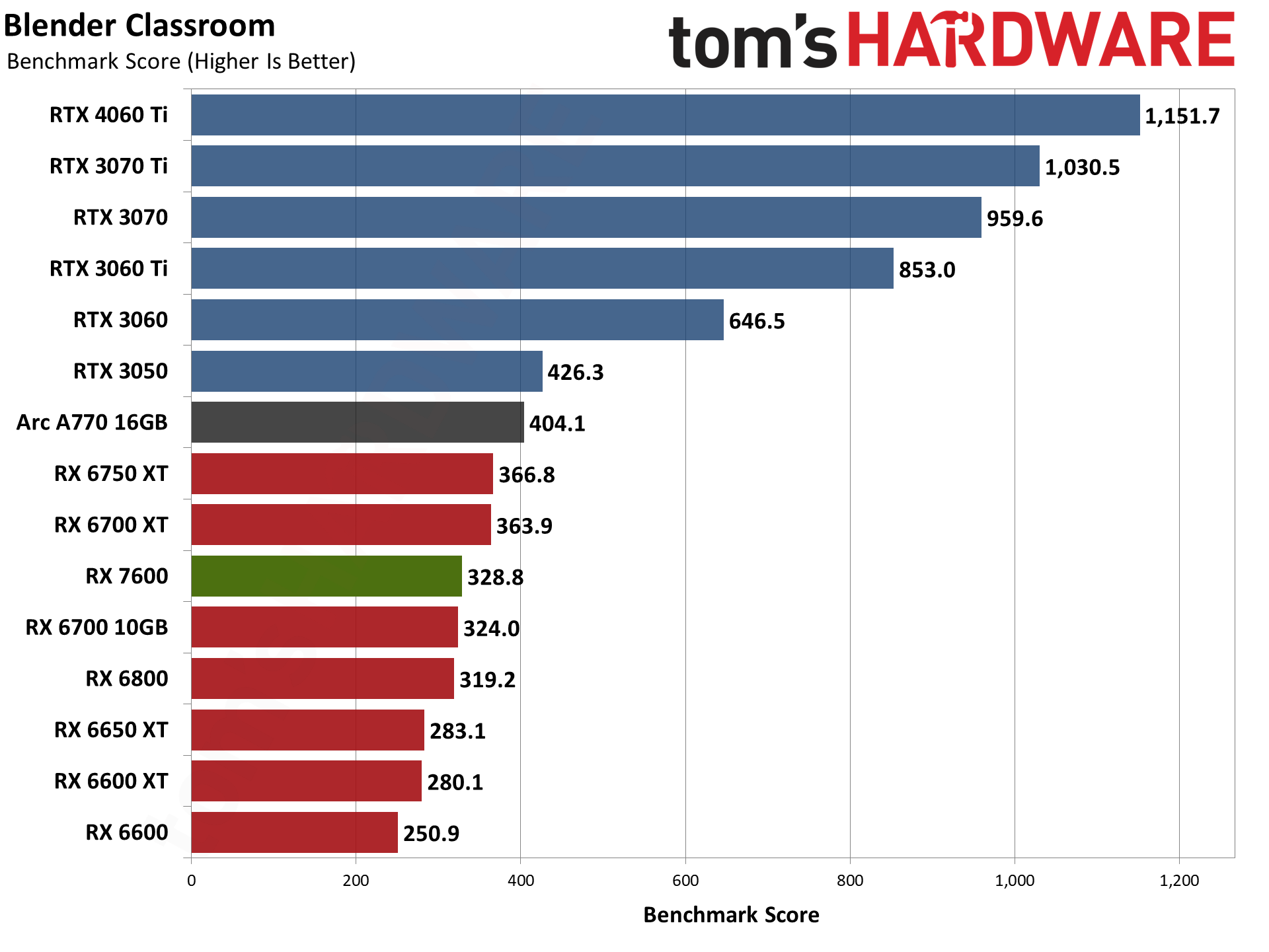
Moving on to 3D rendering, Blender is a popular open-source rendering application, and we're using the latest Blender Benchmark, which uses Blender 3.50 and three tests. Blender 3.50 includes the Cycles X engine that leverages ray tracing hardware on AMD, Nvidia, and even Intel Arc GPUs. It does so via AMD's HIP interface (Heterogeneous-computing Interface for Portability), Nvidia's CUDA or OptiX APIs, and Intel's OneAPI — which means Nvidia GPUs have some performance advantages due to the OptiX API.
The RX 7600 takes up its familiar spot between the RX 6700 10GB and the RX 6650 XT. However, the Classroom scene actually puts the RX 7600 ahead of the 6700. Nvidia's GPUs still easily surpass AMD, and even the RTX 3050 (and Arc A770) outperform the fastest AMD card. (Also, RX 6800 seems to be underperforming a bit.)
- MORE: Best Graphics Cards
- MORE: GPU Benchmarks and Hierarchy
- MORE: All Graphics Content
Get Tom's Hardware's best news and in-depth reviews, straight to your inbox.
Current page: Radeon RX 7600: Professional Content Creation and AI Performance
Prev Page Radeon RX 7600: 1440p Gaming Performance Next Page Radeon RX 7600: Power, Clocks, Temps, and Noise
Jarred Walton is a senior editor at Tom's Hardware focusing on everything GPU. He has been working as a tech journalist since 2004, writing for AnandTech, Maximum PC, and PC Gamer. From the first S3 Virge '3D decelerators' to today's GPUs, Jarred keeps up with all the latest graphics trends and is the one to ask about game performance.
-
Amdlova As what I expected another pile of crap. One watt better than the old gen. Why spend sand on these... 199 dollar max for this graphics.Reply
@JarredWaltonGPU thanks for the review... hard time to you trying find somenthing good or new on these graphics -
salgado18 AMD should have made a refresh of the RX 6650 XT and earn more money. If nothing really improved, then what's the point?Reply -
btmedic04 Glad to see the last minute price drop, it definitely makes it a much more appealing product. Currently at newegg there are 5 rx 6650xt models available with an average price of $288 minus an average discount of $20. So more or less the same price as the rx 7600 mba. given that information, if I were in the market at that price range, I'd just grab the 7600 given they are more or less the same price once you factor in discounts. It still would've been nice to see a -600 class part match the last generation -700 class part in performance. Maybe we'll see that with a 7600 xtReply -
InvalidError Reply
While it may not make sense for people who already own something from the last generation or two, plenty of people have 5+ years old GPUs or are building new with no half-decent GPU to spare.Amdlova said:As what I expected another pile of crap. One watt better than the old gen. Why spend sand on these... 199 dollar max for this graphics.
I'm still using a GTX1050, waiting for something decent to hit ~$260 CAN. I bought an open-box A750 for $270 a few weeks ago, ended up returning it as seemingly defective since it caused my PC to crash repeatedly. -
Elusive Ruse Reply
People want a brilliant GPU and they wanna pay $250 for it, as if the whole pandemic, parts shortage and a historic inflation went over their head. This might sound like a radical idea, but mid-range starts at $500 now. :LOL:InvalidError said:While it may not make sense for people who already own something from the last generation or two, plenty of people have 5+ years old GPUs or are building new with no half-decent GPU to spare.
I'm still using a GTX1050, waiting for something decent to hit ~$260 CAN. I bought an open-box A750 for $270 a few weeks ago, ended up returning it as seemingly defective since it caused my PC to crash repeatedly. -
atomicWAR Reply
Should it though?Elusive Ruse said:This might sound like a radical idea, but mid-range starts at $500 now. :LOL:
